Rare Rides Icons: The Lincoln Mark Series Cars, Feeling Continental (Part XX)

Today marks the 20th installment of our coverage on the Lincoln Mark cars, and we’ve reached an exciting point in the model’s history. The brass at Lincoln noticed how the Mark IV’s sales were in decline (like all large PLCs of the time) as the Thunderbird-based boat headed toward its final year, 1976. To that end, Lincoln added excitement and luxury to its halo coupe via a new set of very special brand-themed options packages on ‘76 models. It’s time for the Designer Series.
Designer branding on cars was a new thing in the Seventies, arguably pioneered by AMC. The Kenosha-based firm produced Gucci editions of the Hornet in 1972 and 1973, which were bedazzled with the Italian company’s luxury touches in an excellent example of Seventies gauche. AMC followed up in 1973 with a Pierre Cardin edition of the Javelin AMX coupe.
A year later the company went brand normcore with the Levi’s edition of the Gremlin, which had polyester jean-look upholstery and copper rivets. A company called Automotive Design in Miami enjoyed the Gucci hornet enough to build the Gucci Seville at the end of the decade, and it was a lot.
A couple years after AMC’s pioneering idea, Lincoln contracted with American, French, and Italian design houses, and asked them to put their touches (and names) on the Mark IV. America was represented by the Bill Blass Designer Series, while French-styled coupes arrived from Cartier and Givenchy. There was only one Italian-styled Mark IV, and it was from Pucci. Of the four designers selected, the Cartier was perhaps the most likely partner: Lincoln offered an analog Cartier clock since the Mark III as an option, but made it standard on the Mark IV.
It’s worth pointing out here how the Designer Series cars were a step up from the sort of trim packages Lincoln had introduced during the tenure of the Continental Mark IV. Lincoln started in 1973 with the Silver Luxury Group package, available again in 1974. That year it was joined by the Gold Luxury Group and expanded further in 1975 to Blue Diamond, Saddle and White, and Lipstick and White Luxury Groups.
Each Designer Series car was available in a single exterior paint and vinyl combination, though there were exterior trim color options on three of the four offerings. Likewise, all four editions offered leather or cloth interiors. Across all versions, interior trim pieces and upholstery materials were specific to the designer.
There was also a gold-plated dash plaque (22-karat) to call attention to the special nature of the Designer Series Mark IV. Said plaque could optionally be engraved with the name of the well-heeled owner, and often was. Finally, each Designer Series car used its own treatment of the opera window, which bore a golden signature of its design house.
The Bill Blass edition was, as expected, the most typically American of the Designer Series. Resplendent in nautical blue and white, all examples were painted in “Brite Dark Blue Diamond Fire Metallic,” with cream and gold two-tone pinstriping. Body molding trim was available in dark blue, or contrasting cream. The coach roof was finished in cream-colored vinyl, called “Normande” grain. Inside, buyers selected either full blue cloth or blue leather with contrasting cream vinyl inserts.
Cartier was the only edition that featured a timepiece of a matching brand. All examples were painted in Dove Gray, with pinstriping of red and white. There were no options for body moldings on Cartier, as all were color matched to the paint.
Cartier’s vinyl treatment was special among the Designer Series: It was the only one color-matched to the paint in Dove Gray and was also finished in a different vinyl grain than the other three. Said vinyl grain was called “Valino.” Inside, only monochromatic upholstery was available, matched to the exterior paint in cloth or leather.
The other French Designer Series from Givenchy was arguably one of the two most dramatic looks. It arrived in Aqua Blue, with pinstriping in the back and white. Body moldings were finished in aqua or white. The Givenchy was the only Designer Series available with a white vinyl top, finished in Normande grain. Inside the upholstery was available in monochromatic aqua, in either cloth or leather with vinyl inserts.
The lone Italian of the group was the Pucci, the other dramatic Mark IV appearance package. All examples were finished in “Dark Red Moondust Metallic,” and featured silver and red pinstriping. Body moldings were either matched to the paint or silver. The look was set off with a silver vinyl top, in the usual Normande grain. The Pucci offered a single-color interior treatment: dark red cloth or leather.
Each Designer Series Mark IV had its own fan base, and customers lapped up the designer-enhanced coupes. The Bill Blass treatment asked $2,000 ($10,719 adj.) with cloth, or $1,500 ($8,039 adj.) in leather, over the base price of the Mark IV. 3,213 Bill Blass coupes were sold in 1976. The Cartier edition asked the same price as the Bill Blass, and sold even better at 5,716 examples. Of those, 4,786 had leather and 930 had cloth.
The Pucci Edition carried the same pricing as Bill Blass and Cartier. Unfortunately we don’t have production figures for the Pucci. The least expensive of the group was the Givenchy Designer Series, which asked $1,500 ($8,039 adj.) with either cloth or the leather and vinyl treatment. That’s not to say the Mark IV wasn’t already expensive, as its base price in 1976 was $11,060 ($59,280 adj.).
Lincoln increased the base price of the Mark IV in each of its production years to combat inflation; it started in 1972 at $8,640 ($62,647 adj.). However, despite the price increase and declining sales in 1974 and 1975, the Designer Series' arrival in 1976 propped up the sales figures notably. Sales had bottomed out in 1975 at 47,145 examples but rebounded to 56,110 for the Mark IV’s final year.
If one figures roughly a third of those final Mark IV sales were top-spec Designer Series cars, the branding deals were certainly worth continuing in 1977 on the Mark V. We’ll pick up with Mark V next time, and explore the creation of the most successful Mark ever along with its separation from the path of the Thunderbird.
[Images: Ford, AMC, Automotive Design]
Become a TTAC insider. Get the latest news, features, TTAC takes, and everything else that gets to The Truth About Cars first by subscribing to our newsletter.

Interested in lots of cars and their various historical contexts. Started writing articles for TTAC in late 2016, when my first posts were QOTDs. From there I started a few new series like Rare Rides, Buy/Drive/Burn, Abandoned History, and most recently Rare Rides Icons. Operating from a home base in Cincinnati, Ohio, a relative auto journalist dead zone. Many of my articles are prompted by something I'll see on social media that sparks my interest and causes me to research. Finding articles and information from the early days of the internet and beyond that covers the little details lost to time: trim packages, color and wheel choices, interior fabrics. Beyond those, I'm fascinated by automotive industry experiments, both failures and successes. Lately I've taken an interest in AI, and generating "what if" type images for car models long dead. Reincarnating a modern Toyota Paseo, Lincoln Mark IX, or Isuzu Trooper through a text prompt is fun. Fun to post them on Twitter too, and watch people overreact. To that end, the social media I use most is Twitter, @CoreyLewis86. I also contribute pieces for Forbes Wheels and Forbes Home.
More by Corey Lewis
Latest Car Reviews
Read moreLatest Product Reviews
Read moreRecent Comments
- Lorenzo If it's over 30 years old and over 80k miles, and not a classic, it's a parts car, worth no more than 20% of original price.
- Dusterdude No mileage noted on a 33 year old car means likely well north of 300k + miles , along with issues noted , should equate to an ask price of less than $3k
- Ajla IMO, something like this really should be naturally-aspirated.
- Kjhkjlhkjhkljh kljhjkhjklhkjh Unless they are solid state batteries you BAN THEM. I like EVs... but EVs like to burn ... for days
- Kjhkjlhkjhkljh kljhjkhjklhkjh uh .. it looks like a VW golf got the mumps




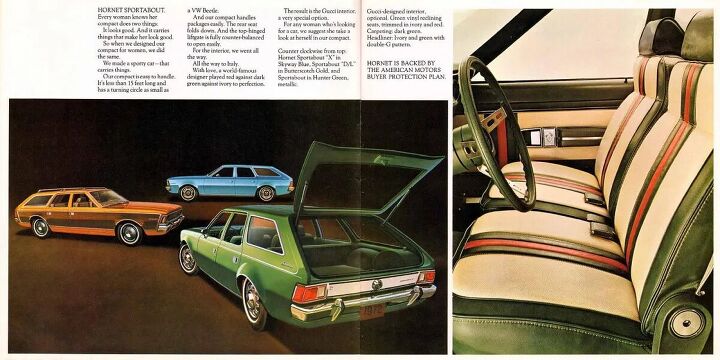





















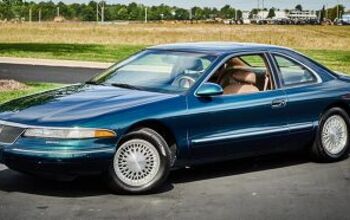
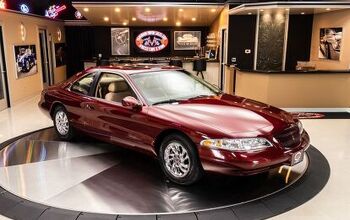
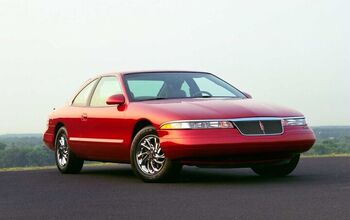
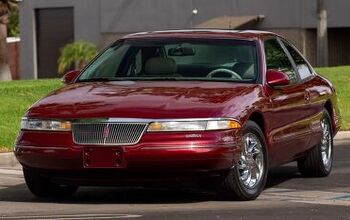
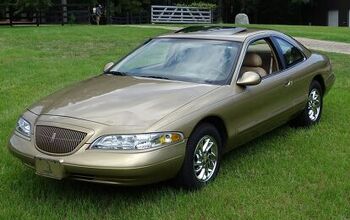






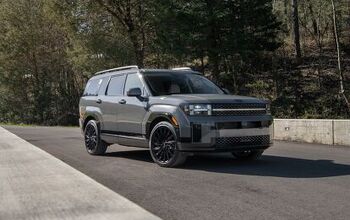



Comments
Join the conversation
Excellent conversation and observations. The generation which was born/grew up during the Depression and War had a different opinion on what luxury meant in a vehicle. They wanted isolation from the road. They wanted size and displacement. They wanted automatic transmissions and power everything. And as the domestic manufacturers during the 1970's stumbled in regards to their engineering they instead focused on 'luxury' fittings and finishes. These vehicles mark the epitome of that.
The vast majority of German vehicles during that era did not have the same luxury fittings/finishes. They focused on 'driving'.
And for many of the older generation, there was still a stigma/resentment regarding the Japanese and Germans. As for British vehicles their unreliability was well documented. The Rolls drove no better than a Buick of that era. I do admit to admiring Jaguars but they were finicky.
However that prejudice did not transfer to their children. And just like this generation of soccer moms prefer not to drive the minivans that their parents drove, in the late 1970s. those entering the luxury/near luxury market, turned against the luxo barges/land yachts driven by their parents/ grandparents.
Applying the highly suitable use of television/movie characters. We would never contemplate seeing Milburn Drysdale, Oliver Wendel Douglas, Frank Cannon or Commissioner MacMillan in anything but large luxury domestic vehicles. The same with Henry Hill and Frank Sheeran who eventually went to jail because of his Town Car. And @FreedMike is correct that Dallas was perhaps the first show to celebrate 'yuppies' and showing the affluent driving German vehicles. Not Jock or the older generation but the younger generation.
Lou_BC--Agree I doubt we will see the returns of the big land yachts of the past unless for some reason there are luxo sedan EVs but I still doubt it. I doubt they will stop making the large crew cab pickups but they might not be as popular with Millennials and Generation Y. You are correct that the midsize and compact pickups are the emerging trend and Toyota is planning on coming out with a compact hybrid pickup based on the Rav4 platform and even Ram is considering a compact pickup. HIgher fuel prices and rising costs of vehicles will make the more affordable vehicles more popular with the younger generations not only because they cannot afford the more expensive vehicles but also vehicles are less important to many of them compared to the latest smartphone and flatscreen TV. Not trying to stereotype but where I lived before in a residential area with lots of families the teenagers and young adults were not that into cars, trucks, or suvs. Next door neighbor had to force his oldest son to take driver's ed after he graduated from high school. I couldn't wait to get my driver's license when I started high school it was freedom. The coming generations will buy vehicles but their priorities and tastes will be different and in many cases they will not want to drive an suv or crossover like mom just as those raised with minivans did not want a minivan and the same with station wagons. I think there will always be a place for pickups but their size and power might change. I have started to see more Ford Lightnings and Rivians at my new home but they are owned by retired people but if eventually the price becomes more affordable then you might see more younger people adopt them. It will take more time for EVs to gain in popularity. What type of vehicle will the upcoming generations buy? That is the question for the automobile companies of the future to figure out.